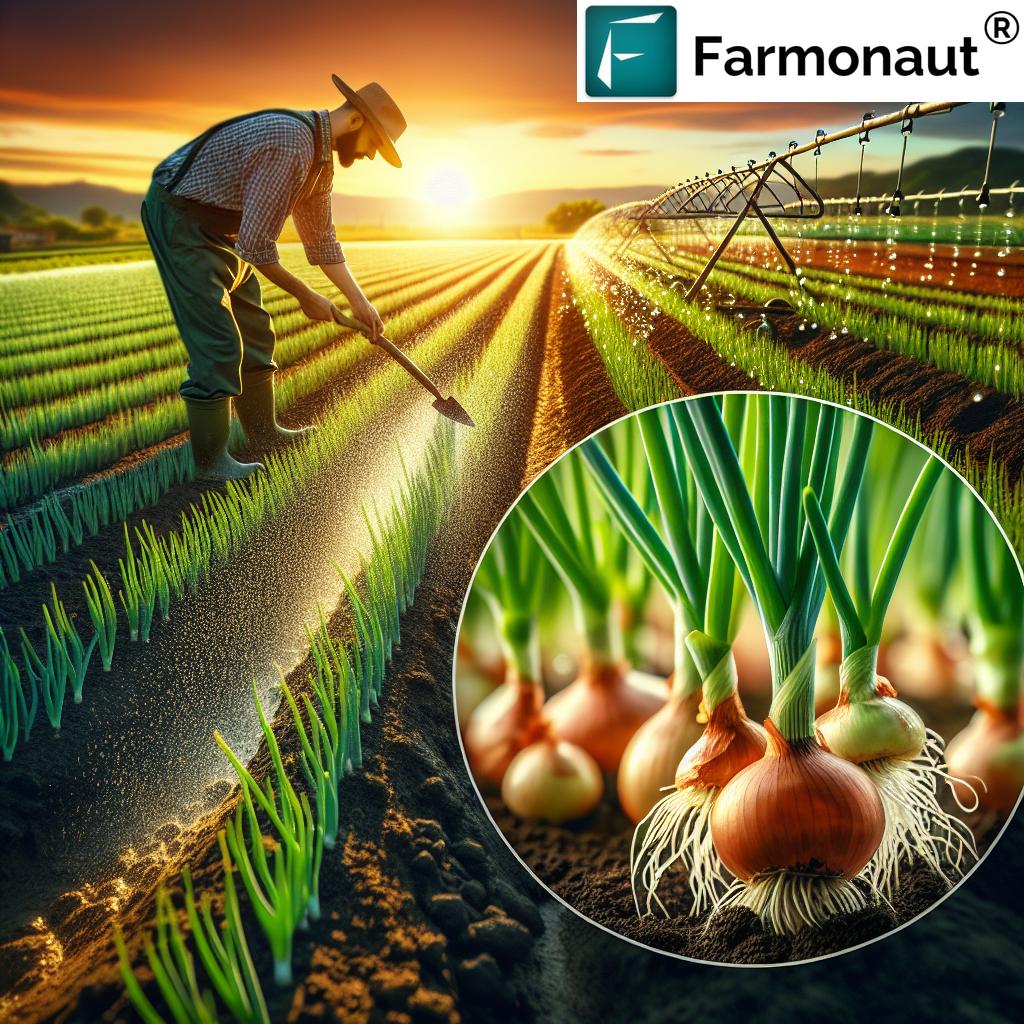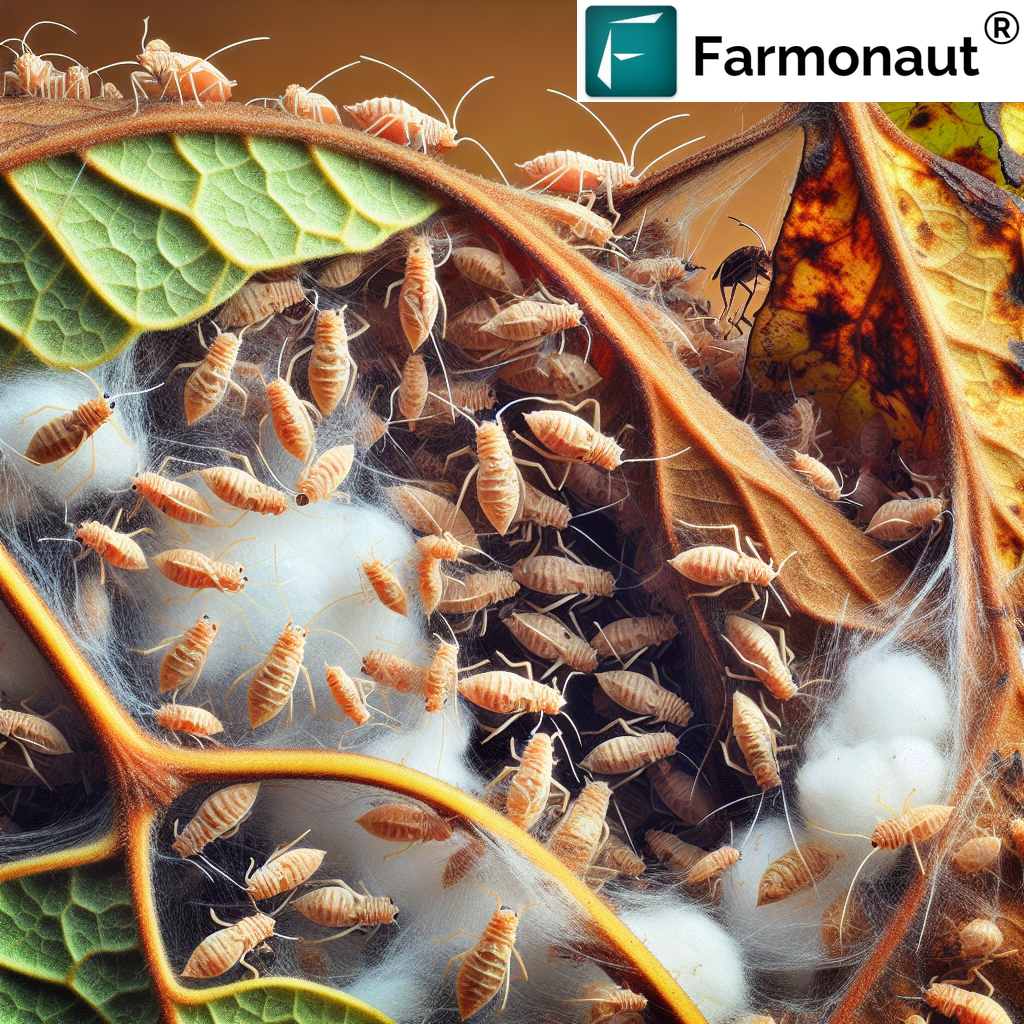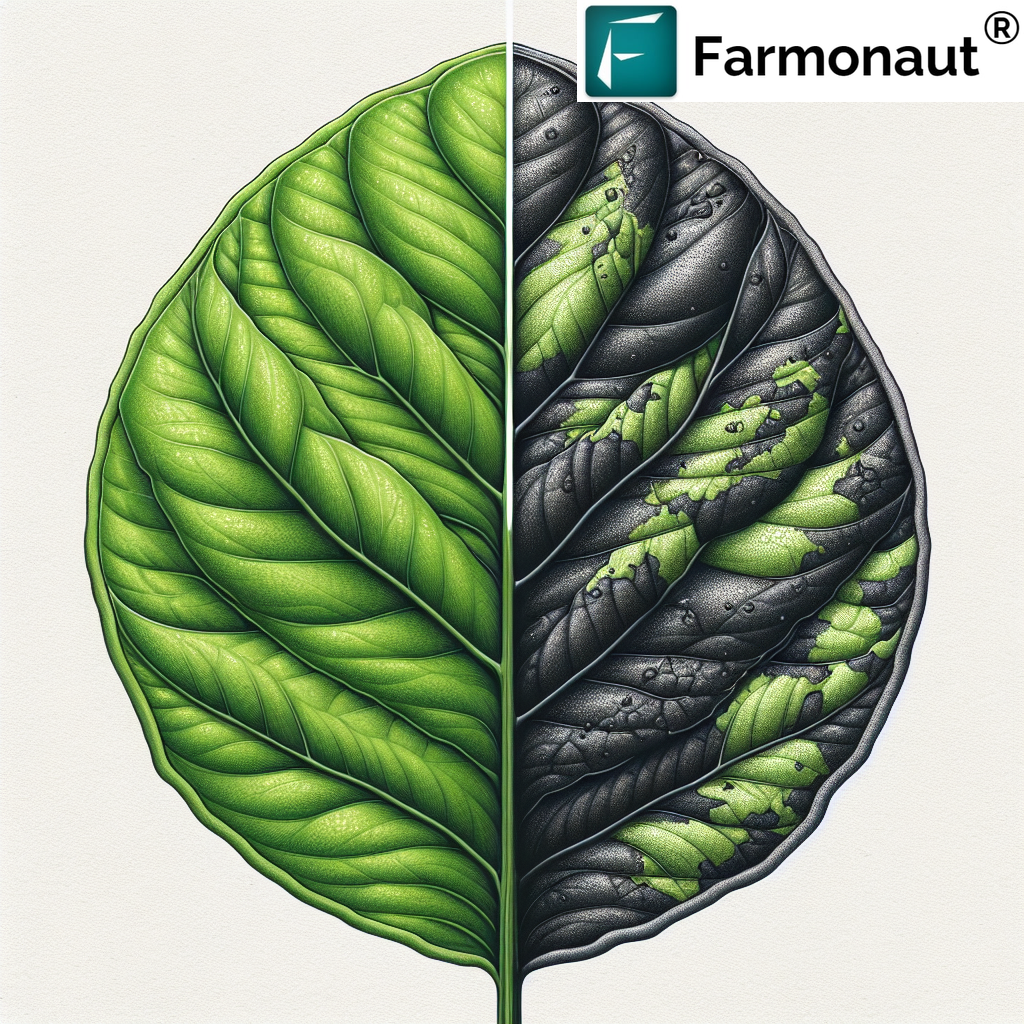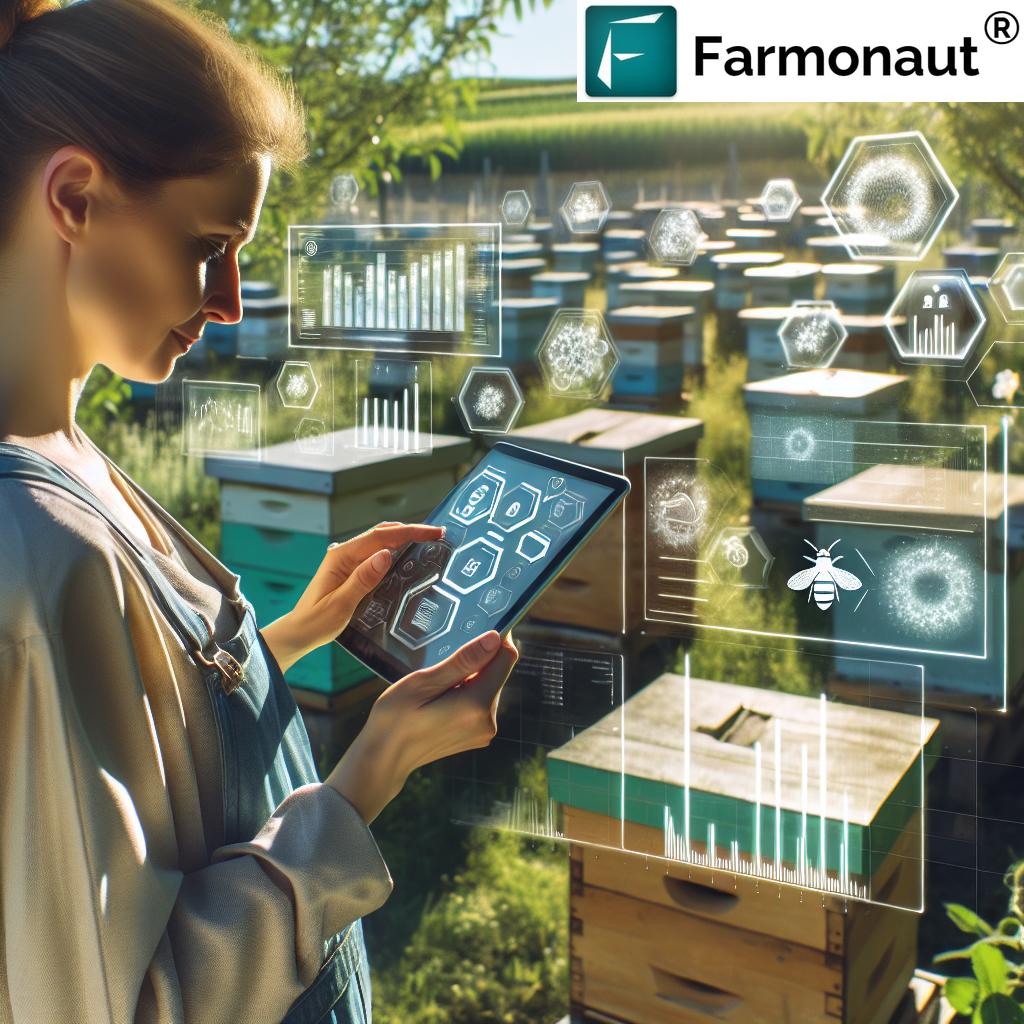Fruit Trees for Sale: 7 Urban Planting Tips 2026
Table of Contents
- Introduction: Why Fruit Trees Continue to Hold a Vital Place in 2026
- Urban Fruit Tree Trivia
- Choosing the Right Fruit Trees for Sale
- Finding Fruit Trees Near Me: The Power of Localization
- Small Fruit Trees: Compact Size, Big Advantages
- Indoor Fruit Trees: Expanding Urban Horizons
- Urban-Friendly Fruit Trees: Sustainability Overview (Table)
- Essential Video Resources
- 7 Urban Planting Tips for Fruit Trees in 2026
- Beyond Planting: Sustainability and Economic Impact
- How Farmonaut Empowers Urban Fruit Tree Cultivation
- Frequently Asked Questions (FAQ)
- Farmonaut Subscription Options
“One mature fruit tree can absorb up to 20 kg of CO2 annually, promoting sustainable urban environments.”
Introduction: Why Fruit Trees Continue to Hold a Vital Place in 2026
Fruit trees are more than just beautiful elements in urban or rural landscapes. In 2025 and looking forward to 2026, fruit trees for sale remain at the core of agriculture, urban farming, sustainable horticulture, and the global push for healthy, resilient living environments. Their presence shapes not just food security but also climate resilience, biodiversity, and community well-being.
With innovations in small fruit trees, indoor fruit trees, and urban-friendly fruit trees, the accessibility of fruit trees for sale is higher than ever. Whether you’re seeking fruit trees near me to support local production, or experimenting with indoor fruit trees for year-round harvesting, understanding the nuances of selection, planting, and sustainable management is crucial for today’s gardeners, commercial farmers, and ecologically minded communities.
This guide delves into the thriving world of fruit trees, shares practical tips for planting fruit trees in urban setups, and explains the intertwined roles of ecological impact and modern horticultural practices.
Explore the Farmonaut API for powerful agricultural data integration. |
API Developer Docs
Choosing the Right Fruit Trees for Sale
Successful planting of fruit trees starts with selecting the right types for your location, space, and goals. In 2026, with an expanded variety of fruit trees for sale through nurseries and agricultural suppliers (both local and regional), making an informed decision is easier than ever.
Focus on Local Adaptation and Variety Selection
-
Climatic suitability is crucial: Always assess your local climate, temperature range, solar exposure, and average precipitation when picking your fruit trees.
For example, dwarf apple cultivars are hardy and thrive in colder zones, while fig trees handle drought and high temperatures with ease. - Resistance and resilience: Modern fruit trees for sale offer varieties bred for specific disease resistance (scab, blight, powdery mildew), tolerance to frost or drought, and suitability for urban spaces.
- Choices for all spaces: With the growing selection of small fruit trees and indoor fruit trees, even limited areas like balconies or patios can be productive. Dwarf and semi-dwarf variants (often small fruit trees) have multiplied in availability, enhancing accessibility to fresh fruit production.
Why Small & Dwarf Fruit Trees Have Gained Popularity
Adaptable for both urban and rural environments, small fruit trees offer:
- Earlier fruiting, often within 2–3 years compared to the 4–7 year wait of larger trees
- Ease of management in limited spaces, ideal for urban gardens, patios, or containers
- Compatibility with high-density planting
- Lower pruning and water requirements—suitable for sustainable agriculture and areas with limited resources
- Opportunities for experimenting with mixed plantings and increasing biodiversity within small spaces
Tip: When searching for fruit trees near me, prioritize nurseries that clearly label the climatic suitability and growth characteristics of their tree stock.
Examples of Sought-After Urban Fruit Trees for Sale in 2026
- Citrus: Compact mandarins, lemons, and limes that perform well in containers and even indoors
- Dwarf peaches: High-yield, compact, and tolerant of city microclimates
- Columnar apples: Space-saving, straight-growth apples for patios or balconies
- Figs: Resilient, drought-tolerant, and productive in a wide range of conditions
- Berries: Blueberries, strawberries, and raspberries bred for container cultivation and rapid fruiting
Watch: 10 Low-Investment, High-Profit Agri Business Ideas in 2025
Make Selection a Foundation: The Role of Nurseries and Suppliers
- Always purchase trees from reputable nurseries that offer expanded variety and transparent details on parentage, size, resilience, and care needs.
- Ask for rootstock information: Some fruit trees are grafted onto disease-resistant or dwarfing rootstocks, which modify final size and vigor.
- When considering indoor fruit trees, inquire about pollination requirements—some varieties are self-fertile, while others may need a second tree nearby.
In summary, choosing the right fruit trees for sale means considering your environment, desired productivity, and available space—essential factors for successful, sustainable fruit tree cultivation in urban and suburban settings.
Learn: Regenerative Agriculture and Climate-Smart Solutions
Discover Farmonaut’s Carbon Footprinting tools—ideal for urban growers and commercial farmers seeking to monitor the environmental impact of fruit tree cultivation. These tools offer actionable, satellite-based carbon data—empowering more sustainable agricultural practices.
Finding Fruit Trees Near Me: The Power of Localization
The localization of fruit tree sourcing has surged in recent years—and for good reason. Fruit trees near me means:
- Quicker adaptability: Trees sourced from local nurseries or agricultural extension services are already adapted to your climate and soil, increasing their survival and productivity rates.
- Reduced environmental impact: Fewer miles traveled means smaller carbon footprints and fresher stock.
- Support for local biodiversity: By sharing saplings and exchanging stock through local fairs and community events, communities preserve a more diverse gene pool—helping avoid the pitfalls of monoculture and imported, unsuitable varieties.
Most importantly, regional nurseries and community-led initiatives provide access to lesser-known, heritage, or indigenous varieties that thrive where you live—offering both ecological and cultural advantages.
Learn: Sustainable Viticulture and AgTech Innovations
Trace your produce’s journey from sapling to table with Farmonaut’s blockchain-based traceability solutions—an excellent match for urban and commercial orchards seeking transparency and consumer trust.
Quick Tips for Local Success
- Visit community nurseries for up-to-date advice on soil conditions, rootstocks, and pollinator-friendly practices.
- Join or organize fruit tree exchanges to diversify your garden with rare or indigenous varieties.
- Leverage agricultural extension services for workshops, soil testing, and pest/disease alerts.
“Urban planting of dwarf fruit trees can yield approximately 30% more fruit per square meter than traditional orchards.”
Small Fruit Trees: Compact Size, Big Advantages
In the ever-tightening spaces of modern cities, small fruit trees have proven to be a game changer. With urban lots, balconies, and rooftop gardens in abundance, small fruit trees open the door to home-grown fresh fruits without requiring a traditional orchard.
Key Advantages of Small Fruit Trees for Urban and Sustainable Living
- Space efficiency: Dwarf and semi-dwarf varieties (sometimes growing only 1–2 meters tall) allow for high-density planting in raised beds, containers, or even along walkways.
- Increased yield per area: Thanks to controlled root systems and compact size, it’s possible to plant two or three times as many trees in the same area compared to standard varieties.
- Early and frequent harvests: Most small fruit trees begin fruiting at a much younger age; some apple, peach, or citrus trees bear harvestable fruit within 2–3 years.
- Simplified care: Pruning, watering, and pest control are all made easier, supporting more eco-friendly, low-impact management systems.
- Resilience and adaptability: Being less demanding and more forgiving of varied soil types, dwarf fruit trees are excellent for beginner gardeners, small-scale farmers, urban community projects, and educational gardens.
Most Popular Small Fruit Trees for Urban Sites in 2026
- Dwarf citrus trees (such as Meyer Lemon or Calamondin Orange)
- Columnar apple trees (Ballerina® or Urban® series)
- Dwarf peaches and nectarines
- Blueberries bred for containers and small gardens
- Compact fig cultivars designed for pot and patio culture
Looking to maximize yield in limited space or create multi-varietal “orchards” on a rooftop or courtyard? Small fruit trees offer the solution for modern urban agriculture everywhere.
Explore: Making Farming Better with Satellite Data
Get expert, satellite-powered crop and plantation advisory with Farmonaut for better fruit tree site planning, soil assessment, and seasonal guidance.
Indoor Fruit Trees: Expanding Urban Horizons
The boundaries of fruit tree cultivation no longer end at the backyard or city lot. In 2026, advances in horticultural technology (smart LED lighting, hydroponics, compact genetics, and environmental control) have brought indoor fruit trees mainstream. Whether you live in a high-rise, have minimal outdoor access, or desire year-round fresh fruit production, these options are transforming urban food systems.
- Year-round harvest: Indoor fruit trees are immune to seasonal changes—fruit even in winter!
- Protection from pests/disease: Controlled environments reduce exposure to common orchard issues.
- Versatility of placement: Suitable for apartments, office buildings, classrooms, and commercial vertical farm setups.
Popular indoor fruit trees include:
- Meyer lemon, Dwarf lime, Calamondin orange: Fragrant, prolific, decorative, and ideal for pots.
- Dwarf peaches and nectarines: Often self-fertile; suited for well-lit windows or climate-controlled greenhouses.
- Figs and compact pomegranates: Offer unique fruit flavor and architectural beauty indoors.
- Indoor blueberries and strawberries: Proven to fruit in deep containers or modular hydroponic racks.
Whether for the home, classroom, or urban office, indoor fruit trees empower more people to take part in sustainable agriculture on a micro-scale—while enjoying the therapeutic benefits of greenery indoors.
See: Automated Tree Detection & Location Mapping – Precision Tools for Urban Planning
For orchards, cities, or community groves, Farmonaut’s large scale farm management tools unite AI-driven monitoring with simple user interfaces, supporting professional, data-driven cultivation and maintenance of fruit trees, large or small.
Watch: Climate-Resilient Picks & Pro Planting Tips for Spring Gardens
Urban growers and community farms can access satellite-verified crop loans and insurance through Farmonaut, ensuring investment protection and easy access to funding.
See: Satellite & AI Crop Monitoring Training – Urban Orchards and Gardens
Urban-Friendly Fruit Trees: Sustainability Overview
Compare some of the best sustainable, urban-ready fruit tree varieties below and identify the best choices for urban, eco-friendly living in 2026.
| Tree Variety | Ideal Location | Estimated Mature Height (m) | Time to Fruit (years) | Water Needs | Eco-Benefits | Maintenance Level |
|---|---|---|---|---|---|---|
| Dwarf Apple (Malus domestica) | Patio, small yard, containers | 1.8–2.5 | 2–3 | Medium | Air quality, pollinator support | Low |
| Meyer Lemon (Citrus × meyeri) | Indoor/Outdoor, container | 1–1.8 | 2–3 | Medium | Air purification, edible landscaping | Medium |
| Fig ‘Petite Negra’ (Ficus carica) | Container, indoor, balcony | 0.9–1.2 | 1–2 | Low | Drought tolerance, biodiversity | Low |
| Blueberry ‘Top Hat’ (Vaccinium corymbosum) | Indoor/outdoor, container | 0.6–0.9 | 2–3 | Medium | Pollinator support, edible groundcover | Low |
| Dwarf Peach (Prunus persica) | Patio, container, rooftop | 1–1.5 | 2–3 | Medium | Urban wildlife support, beauty | Medium |
| Columnar Apple (Malus domestica) | Balcony, narrow beds | 2.5–3 | 2–3 | Medium | Minimal space, urban greenery | Low |
| Calamondin Orange (Citrus microcarpa) | Indoor/outdoor, container | 1–1.5 | 1–2 | Medium | Air purification, non-toxic | Medium |
| Dwarf Pomegranate (Punica granatum ‘Nana’) | Indoor/Outdoor, container | 0.6–1 | 3–4 | Low | Attracts pollinators, soil health | Low |
Quick Glance Insights
- Indoor fruit trees almost always favor low to medium maintenance and water needs.
- Small fruit trees with compact root systems can transform underused spaces, enhance air quality, and contribute actively to local food production and biodiversity.
See: Farmonaut Large Scale Monitoring for Urban & Commercial Planting Success
Optimize resource usage and farm logistics with Farmonaut’s fleet management tools—perfect for urban gardens, community orchards, and commercial fruit tree setups requiring smart tracking and resource allocation.
7 Urban Planting Tips for Fruit Trees in 2026
Properly planting fruit trees and ensuring their successful establishment is fundamental for high productivity, healthy living, and environmental benefit. With new technology and awareness of sustainable approaches, here are seven crucial planting tips every urban grower should know:
-
Assess the Right Site and Location:
Ensure your site receives at least 6-8 hours of sunlight daily and isn’t prone to frost pockets or waterlogging. For patios, rooftops, or balconies, select varieties proven for container growth. -
Test and Prepare Soil:
Check soil pH and fertility. Urban soils can be compacted or contaminated; raised beds, planters, or imported soil mixes add control. Use compost and mulch to boost soil biodiversity and water retention. -
Choose the Right Fruit Tree Variety:
Select disease-resistant, regionally proven types (“fruit trees near me”). Dwarf trees or those with controlled rootstock fit limited urban spaces best. -
Time Your Planting Correctly:
In most climates, late winter/early spring or early autumn is optimal—yet for indoor fruit trees, you can plant year-round. -
Plant with Care:
Dig a hole only as deep as the root ball and two to three times as wide. Avoid burying graft unions. Support young trees with stakes as needed, and water thoroughly. -
Use Mulch and Watering Strategies:
Apply mulch to minimize evaporation and keep roots moist. Adopt drip or sub-irrigation for water efficiency. Monitor needs—indoor trees may require more frequent watering. -
Implement Integrated Pest and Disease Management:
Encourage pollinators and beneficial insects by interplanting flowers. Regularly check foliage. Use organic controls (biological sprays, traps) when necessary—helping achieve both productivity and eco-balance.
Bonus Tips for Urban and Innovative Planting Setups
- For tight spaces, try espalier or columnar-trained fruit trees.
- Use smart planters with integrated moisture sensors for tech-forward, failproof care.
- Involve the local community in maintenance, harvests, and sapling exchanges—building social resilience along with healthy food supply.
Beyond Planting: Sustainability and Economic Impact
Planting fruit trees is about much more than harvesting fresh produce. In 2026 and beyond, urban fruit tree cultivation plays a key role in the world’s transition to sustainable agriculture, food security, and environmental balance. Let’s see how:
Ecological Benefits
- Carbon sequestration: Trees, even small or indoor variants, steadily absorb CO2 and help cool city environments.
- Soil stabilization: Fruit trees’ roots prevent erosion and support healthy urban soils—especially important for sloped yards or community gardens.
- Biodiversity support: Flowering and fruiting species provide food and shelter for pollinators and birds, crucial for urban ecosystem vitality.
- Stormwater management: Increased tree coverage absorbs rainfall, helping reduce runoff and pollution.
Economic Advantages
- Diversified income streams: Community orchards, urban farm co-ops, and home-based micro-markets are fueled by fresh, local fruit production.
- Reduced reliance on imported produce: Local, early-bearing fruit trees support neighborhood food security.
- Value-added possibilities: Urban producers can experiment with jams, dried fruit, or small-batch cider for supplementary income.
- Support for local jobs: Care, pruning, harvesting, and processing fruit trees nurture green employment opportunities.
Social & Community Impact
- Community gardens, schoolyards, and “edible landscapes” introduce healthy living, education, and resilience to diverse populations.
- Fruit trees symbolize investment in the future, inviting participation, stewardship, and pride in urban regeneration.
By blending tradition and innovation, urban fruit tree planting in 2026 secures nutrition, environmental quality, and local empowerment for years to come.
How Farmonaut Empowers Urban Fruit Tree Cultivation
At Farmonaut, we are passionate about making advanced, satellite-driven technologies accessible and affordable for growers of all scales—from backyard orchardists to commercial operations. Our solutions bridge the worlds of planting fruit trees, precision agriculture, and sustainable management:
- Satellite Monitoring: We offer real-time monitoring of soil health, vegetation vitality, and orchard planning using multispectral satellite imagery. This empowers urban gardeners, community leaders, and commercial growers to optimize fruit tree selection, placement, and care.
- Jeevn AI Advisory: Our AI advisory tools provide timely, personalized strategies for planting fruit trees, irrigation, and eco-friendly maintenance—maximizing both productivity and sustainability.
- Blockchain Traceability: We strengthen transparency in urban and rural supply chains, from tree nursery to harvest, laying the groundwork for authentic, reliable urban food systems.
- Environmental Impact Tracking: Our analytics tools enable growers to monitor carbon footprints and make climate-smart choices—benefitting urban environments and planetary health.
- Resource & Fleet Management: We empower community orchards, co-ops, and municipal projects to manage labor, machinery, and crop inputs efficiently for optimal results.
FAQ: Fruit Trees for Sale and Urban Planting in 2026
-
Q: Can I grow fruit trees in a very small space or on a balcony?
A: Yes! Small fruit trees and indoor fruit trees bred for containers are ideal for balconies, patios, and even indoors—especially columnar or dwarf forms. Ensure adequate sunlight and use high-quality potting mix. -
Q: What is the best time to plant fruit trees in urban environments?
A: For most outdoor settings, late winter or early spring is best. Fall planting is also suitable in mild climates. For indoor trees, you can plant year-round. -
Q: How do I find the right fruit tree species for my city?
A: Search for fruit trees near me at local nurseries or through agricultural extension offices that stock climate-adapted trees—preferably heritage or disease-resistant varieties. -
Q: Are dwarf or small fruit trees as productive as full-sized ones?
A: Yes! In fact, urban planting of dwarf fruit trees can yield up to 30% more fruit per square meter than traditional orchards, thanks to high-density strategies and rapid maturation. -
Q: What is the easiest fruit tree to grow indoors?
A: Meyer lemon, Calamondin orange, and dwarf fig are widely regarded as beginner-friendly, productive, and tolerant of indoor conditions. -
Q: How does Farmonaut help with planting fruit trees?
A: We provide satellite-powered insights, real-time crop health monitoring, AI-based advisory for site selection and care, and resource management tools to optimize urban and commercial fruit tree cultivation. -
Q: How do fruit trees benefit urban environments?
A: They absorb CO2, cool city environments, reduce drought risks, support local pollinators, and supply fresh food—essential for climate-resilient cityscapes.
Farmonaut Subscription Options
Ready to bring the power of satellite insights, AI-driven advisory, and smart management to your urban fruit tree cultivation? Choose from our flexible subscription plans below:
Conclusion: Urban Fruit Trees—Vital for Tomorrow’s Sustainable Living
As we move deeper into 2026 and urbanization accelerates worldwide, fruit trees for sale represent not only a smart investment in nutrition and beauty but also a commitment to sustainable, climate-resilient cities. By choosing the right varieties, focusing on local sourcing, and leveraging modern best practices (including innovative Farmonaut tools), individuals and communities can transform even the smallest spaces into productive, eco-friendly orchards.
Whether you are a home gardener, a commercial farmer, or a member of a community project, investing in fruit trees nurtures your land, your health, and the wellbeing of future generations.
Let’s plant for a better, greener tomorrow—one urban fruit tree at a time.












